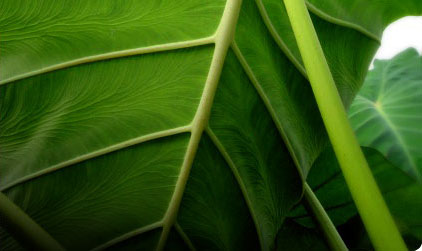Use As Food
Mainly as table taro.
Distribution
Most common on the island of Hawai‘i, grown chiefly under māla (dryland) culture; it thrives best in wet upland forests, where it temperatures may be cooler. It can spend two years in the ground.
General Characteristics
Medium in height, well spreading, maturing within 8 to 12 months, producing from 5 to 10 ‘ohā; characterized by white kōhina (stem base) and reddish-brown shading on the lower half of the Hā (Petiole).
Ha (Petiole)
65 to 90 cm. long, reddish-brown shading to greenish on upper portion, indistinctly brownish at the lihi (stem edge), white at the kōhina (base).
Lau or Lu'au(Leaf Blade)
40 to 50 cm. long, 30 to 35 cm. wide, 30 to 40 cm. from tip to base of sinus (māwae), arrow head shaped, medium green; piko light yellowish-green; round leaf section (lobes) obtuse to slightly acute with wide lihi māwae (sinus).
'I'o kalo (Corm)
Flesh chalky white with yellowish fibers; skin whitish.
Pua (Flower)
Remarks
